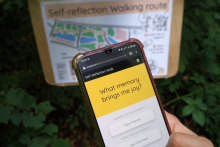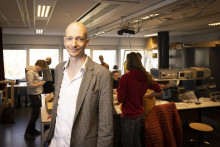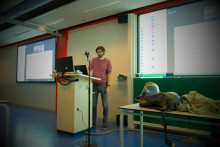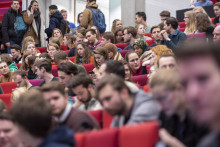Instead of doing a project under the tutelage of a UT researcher or a company, Lahuis came up with her own research proposal. ‘I was already quite interested in the concept of self-reflection. I’ve been keeping a bullet journal, I write a lot and I ask myself different kinds of self-reflection questions every day,’ says Lahuis. ‘I wanted to combine this occupation with a focus on students’ mental health, especially with the UT report on student wellbeing from 2019 and the impact of the corona crisis in mind. I wanted to see whether self-reflection could benefit mental health, if students become more aware of their own thoughts, feelings and behaviour.’
Signs with QR codes
After a period of exploring different options to tackle the issue and analysing a plethora of wellbeing and mindfulness apps, Lahuis came up with the idea she ultimately stuck with. ‘I created a walking route on the north side of the campus, along the Horstlindelaan, which takes about twenty minutes to complete. Along the way, there are five signs with QR codes on them,’ Lahuis explains. ‘Once people – either by themselves or in pairs – scan a QR code, a webpage with a prompt appears. I integrated four different types of self-reflection methods: a self-reflection question, an informative question, a mindfulness question and a reflective action.’
What would make today a great day? What were you grateful for when you got out of bed this morning? Those are the types of self-reflective questions participants had to answer. ‘It was important to not have too many signs along the way, since you also need time to reflect, while taking a walk that’s healthy by itself,’ says Lahuis. ‘Participants were very positive. For eight out of ten participants, this experience sparked interest in continuing with self-reflection.’
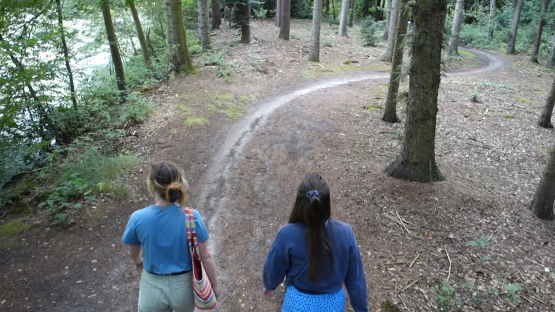
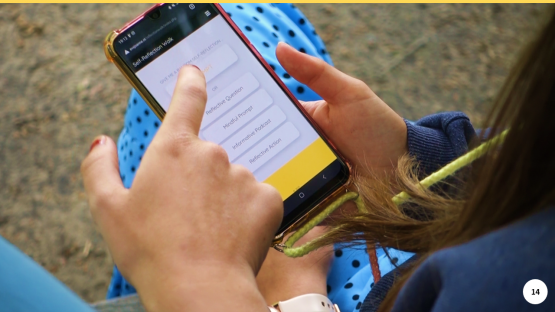
Tailor-made
Not only participants were excited about the project. Lahuis’ supervisor and CreaTe teacher Erik Faber says the project embodies what the CreaTe programme stands for. ‘It is an example of more than technology; technology itself is a means but not the goal. In the end it comes down to having a great idea which fullfulls the goal and ties in best to the needs of the users.’ What’s interesting about this specific project, is its flexibility and scalability, adds Faber. ‘You could set out the walking route anywhere, for any kind of audience. Think of, for instance, introducing new employees to the UT, or setting out the route off-campus, for citizens to connect, perhaps even a dating activity. There is also potential for more research into this kind of experience. The UT has experts for that, in the field of technology, design and (positive) psychology.’
The Creative Technology programme also considers to implement the project, adds Faber. ‘We have one course that runs through all eight modules of the first and second year, called Professional Development, in which students are connected to a permanent mentor. This walking route is definitely a good fit for this course. For instance, a student and mentor could do the walking route together, to get to know each other in the first module. And because the prototype gives room for a tailor-made solution, we can offer it in different forms later on.’
A UT wide implementation is also on the horizon, says Lahuis. ‘Maybe not in the wellbeing weeks that just started, but in the next edition. Looking at the student wellbeing and the healthy campus projects, this prototype would be a good fit and can be implemented. In fact, it’s lying around, ready to be used.’


